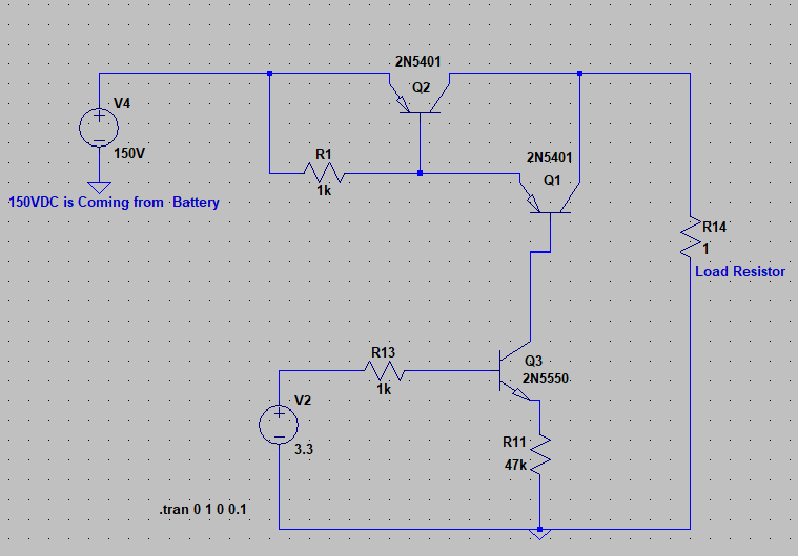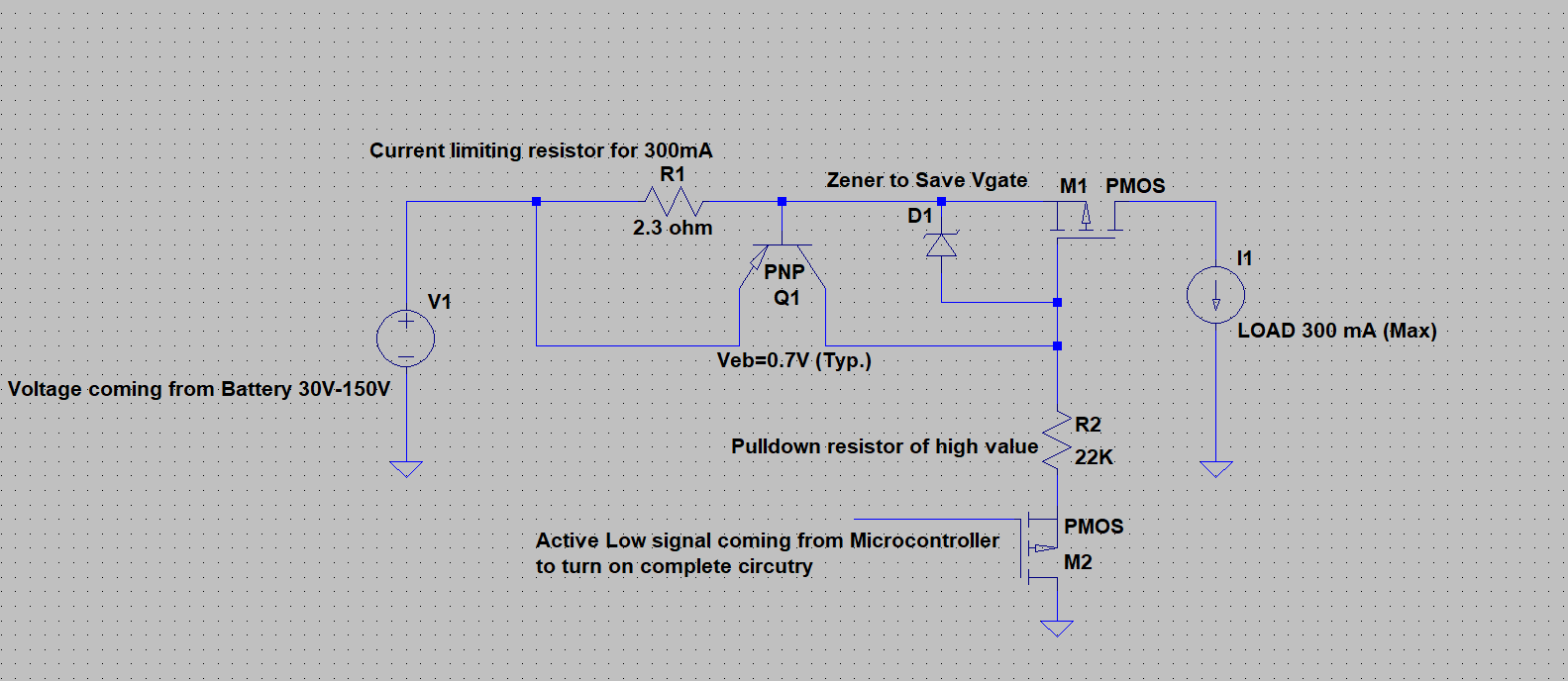Post History
I am trying to analyse what is controlling the load current in the below Darlington configuration. Is it the base current of transistor Q3 which is controlling current through R14 / emitter curr...
#5: Post edited
- I am trying to analyse what is controlling the load current in the below Darlington configuration.
- 1. Is it the base current of transistor Q3 which is controlling current through R14 / emitter current of Q2?
- 
- 2. If it is, then is the maximum permissible load current is calculated by Ic(Q3) * Q1 beta * Q2 beta ?
- 3. From light load to maximum load, will all three transistor stay in the active region? For light loads , Q2 may get into saturation region I suppose.
- EDIT :
Alternate circuit to acheive the same functionality- 
- are there any drawbacks to use this circuit ?
- I am trying to analyse what is controlling the load current in the below Darlington configuration.
- 1. Is it the base current of transistor Q3 which is controlling current through R14 / emitter current of Q2?
- 
- 2. If it is, then is the maximum permissible load current is calculated by Ic(Q3) * Q1 beta * Q2 beta ?
- 3. From light load to maximum load, will all three transistor stay in the active region? For light loads , Q2 may get into saturation region I suppose.
- EDIT :
- Alternate circuit to achieve the same functionality
- 
- are there any drawbacks to use this circuit ?
#4: Post edited
- I am trying to analyse what is controlling the load current in the below Darlington configuration.
- 1. Is it the base current of transistor Q3 which is controlling current through R14 / emitter current of Q2?
- 
- 2. If it is, then is the maximum permissible load current is calculated by Ic(Q3) * Q1 beta * Q2 beta ?
3. From light load to maximum load, will all three transistor stay in the active region? For light loads , Q2 may get into saturation region I suppose.
- I am trying to analyse what is controlling the load current in the below Darlington configuration.
- 1. Is it the base current of transistor Q3 which is controlling current through R14 / emitter current of Q2?
- 
- 2. If it is, then is the maximum permissible load current is calculated by Ic(Q3) * Q1 beta * Q2 beta ?
- 3. From light load to maximum load, will all three transistor stay in the active region? For light loads , Q2 may get into saturation region I suppose.
- EDIT :
- Alternate circuit to acheive the same functionality
- 
- are there any drawbacks to use this circuit ?
#3: Post edited
- I am trying to analyse what is controlling the load current in the below Darlington configuration.
- 1. Is it the base current of transistor Q3 which is controlling current through R14 / emitter current of Q2?
- 2. If it is, then is the maximum permissible load current is calculated by Ic(Q3) * Q1 beta * Q2 beta ?
- 3. From light load to maximum load, will all three transistor stay in the active region? For light loads , Q2 may get into saturation region I suppose.
- I am trying to analyse what is controlling the load current in the below Darlington configuration.
- 1. Is it the base current of transistor Q3 which is controlling current through R14 / emitter current of Q2?
- 
- 2. If it is, then is the maximum permissible load current is calculated by Ic(Q3) * Q1 beta * Q2 beta ?
- 3. From light load to maximum load, will all three transistor stay in the active region? For light loads , Q2 may get into saturation region I suppose.
#2: Post edited
**PNP Darlington pair as a current limiter**
- PNP Darlington pair as a current limiter
#1: Initial revision
**PNP Darlington pair as a current limiter**
I am trying to analyse what is controlling the load current in the below Darlington configuration. 1. Is it the base current of transistor Q3 which is controlling current through R14 / emitter current of Q2? 2. If it is, then is the maximum permissible load current is calculated by Ic(Q3) * Q1 beta * Q2 beta ?  3. From light load to maximum load, will all three transistor stay in the active region? For light loads , Q2 may get into saturation region I suppose.


















